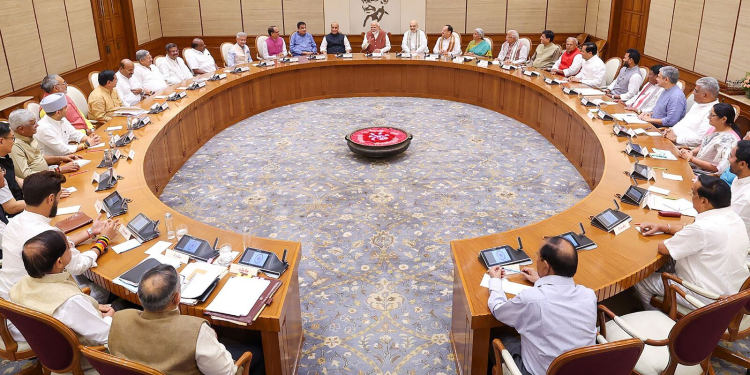In a major boost to India’s premier technical education infrastructure, the Union Cabinet chaired by Prime Minister Narendra Modi has approved a comprehensive expansion plan for five of the newer Indian Institutes of Technology (IITs). The Rs.11,828.79 crore initiative will significantly enhance both academic and infrastructure capacity at these institutions over the next four years.
The expansion, dubbed “Phase-B construction,” targets IITs established after 2014 in Andhra Pradesh (IIT Tirupati), Kerala (IIT Palakkad), Chhattisgarh (IIT Bhilai), Jammu & Kashmir (IIT Jammu), and Karnataka (IIT Dharwad).
“This expansion fulfills our Budget 2025-26 commitment to create additional infrastructure in the five IITs started after 2014,” a government spokesperson said, referencing the budget announcement that highlighted how the total number of students across all 23 IITs has doubled from 65,000 to 1.35 lakh over the past decade.
The Cabinet has approved creation of 130 new faculty positions at the Professor level (Level 14 & above) to support the increased student population. Additionally, five state-of-the-art research parks will be established to strengthen industry-academia linkages, fostering innovation and practical applications of research.
Implementation will occur systematically over four years, with student intake increasing progressively: 1,364 students in the first year, 1,738 in the second, 1,767 in the third, and 1,707 in the fourth year. These increases will span undergraduate, postgraduate, and PhD programs.
Upon completion, these five IITs will accommodate 13,687 students, a substantial increase from the current capacity of 7,111 students. The nearly 93% boost in student strength is expected to significantly expand access to India’s most sought-after technical education institutions.
The expansion is projected to generate substantial employment opportunities, both directly and indirectly. Direct jobs will come through faculty hiring, administrative staff, researchers, and support personnel needed to manage the increased student population and expanded facilities.
Economic benefits extend beyond campus boundaries, as expanded IIT campuses typically stimulate local economies by generating demand for housing, transportation, and services. The government anticipates that graduates from these expanded institutions will further strengthen India’s innovation ecosystem and startup landscape.
While these five IITs are situated in specific states, admissions remain on a pan-India basis, ensuring that benefits reach students from across the country. The expansion aligns with broader national goals of strengthening technical education, reducing educational inequality, and enhancing India’s global competitiveness in technology and innovation.
All five institutions began operations from temporary campuses—IIT Palakkad and Tirupati started academic sessions in 2015-16, while the remaining three began in 2016-17. All have since transitioned to their permanent campuses, which will now undergo significant expansion.
IIT’s in India
| IIT Name | State |
| IIT Kharagpur | West Bengal |
| IIT Bombay | Maharashtra |
| IIT Madras | Tamil Nadu |
| IIT Kanpur | Uttar Pradesh |
| IIT Delhi | Delhi |
| IIT Guwahati | Assam |
| IIT Roorkee | Uttarakhand |
| IIT Bhubaneswar | Odisha |
| IIT Gandhinagar | Gujarat |
| IIT Hyderabad | Telangana |
| IIT Jodhpur | Rajasthan |
| IIT Patna | Bihar |
| IIT Ropar | Punjab |
| IIT Indore | Madhya Pradesh |
| IIT Mandi | Himachal Pradesh |
| IIT (Banaras Hindu University), Varanasi | Uttar Pradesh |
| IIT Palakkad | Kerala |
| IIT Tirupati | Andhra Pradesh |
| IIT Bhilai | Chhattisgarh |
| IIT Goa | Goa |
| IIT Jammu | Jammu & Kashmir |
| IIT Dharwad | Karnataka |
| IIT (Indian School of Mines), Dhanbad | Jharkhand |





